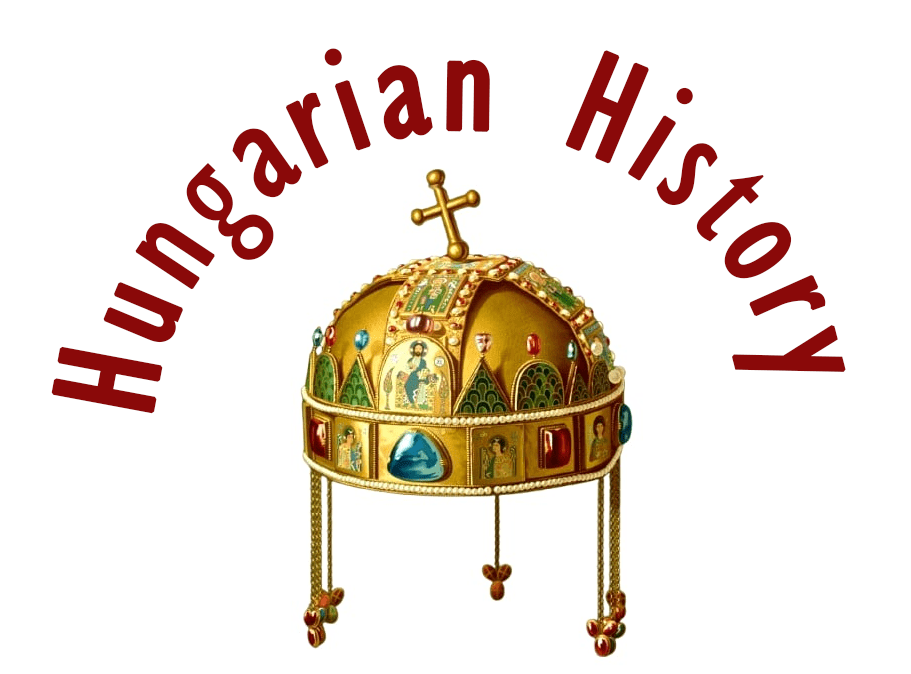
The site of Márévár was already inhabited by the Romans, and finds dating back to the 3rd century have been excavated. The construction of the castle itself can be divided into three distinct periods. The Gothic castle was built in the early 1300s, the Renaissance construction of Bakics Pál dating from 1526-1537 and the construction of the Turkish-era outer defences from 1554-1560. Location: https://tinyurl.com/ynyht2rw

The first mention of the castle, as “Castrum Mare”, can be found in a transcription of a charter of 1316, dated 1318, when King Károly Róbert granted the former royal fortress to Bogár István. He was also the owner in 1320. If the fortress was built after the Mongol invasion, it must have been quite primitive, as excavations have not revealed any ruins older than the early 14th century. Bogár István was previously a retainer of the powerful Németújvári family (by coercion), and after the extinction of the House of Árpád he became the lord of the castle of the king/queen of Óbuda as a follower of King Vencel.

When Károly Róbert became strong, he turned against the oligarchs like the Németújvári family and fought against them with his brother Gunya on the king’s side. The castle was given to him for his merits for the capture of the castle of Kőszeg from the Henrik family. In 1320, Ludegerus was the castellan of Márévár.

During the reign of Károly Róbert, feudal anarchy continued for a long time. Documentary records show that there were numerous attacks on the estates of Bogár István, which led to the slow impoverishment of the family. The last known record of Bogár István dates back to 1329. Márévár castle was mentioned again in 1347, when one of the heirs of the castle, Gunyafi Domonkos, the son of Gunya, the brother of Bogár István, mortgaged his property to Master Vesszös and Töttös, the sons of Becsei István, the Chief Comes of Bars County and the castellan of Léva.

For several generations, the members of the Bogár family held half of Márévár until the family’s complete extinction, but they were in constant litigation with the newly emerging family descended from Becsei Imre, who, through slow and persistent tactics, finally acquired the castle and its villages.

A treaty of 1353 shows that Vesszös erected buildings in the castle. The owner of the other half of the castle was then Gunyafi István, who could not sell his share of the estate to anyone except Masters Vesszös and Töttös. At this time, practically neither of the two owners lived in the castle.

Around the death of King Lajos I (the Great), the Becsei family split into two branches: the Bátmonostori family was one branch, whose living representative at that time was the descendant of Bátmonostori László (Töttös), the other branch was formed by the descendants of Vesszös. The latter owned half of Márévár and its appurtenances. This was the poorer and less powerful branch.

In 1392, Tamás, son of Vesszös, complained that Miklós, son of Gunyafi István, had attacked the mill belonging to Márévár with his mother in order to seize it for himself. They also raided the Battyán estate to collect taxes. In 1392, Tamás, the son of Vesszös, did not appear in the campaign against the Turks, and in the meantime he was ‘doing evil things’ at home, so King Zsigmond took away part of his Márévár estate and gave it to Gunya Miklós.

The sentence was not carried out, because in 1393 Vesszös Tamás and Gunya Miklós tried to make an exchange, which could not be carried out because of the protest of Töttös László of Bátmonostor. In 1403 Vesszös Tamás and his sons were sentenced to the loss of their heads and livestock (they were no longer mentioned in the documents from 1405).

In 1404, Töttös László declared his claim to the Vesszös estates and forbade Gunya’s son Miklós from dispossessing Márévár and its appurtenances, and Maróti János from acquiring them. In 1407, King Zsigmond sent a convention to Pécsvárad to demand that Gunya Miklós surrender half of the castle. In 1413, Rozgonyi Simon, the judge of the court, issued a judgment in favour of Töttös László. In the same year, however, Queen Borbála ordered the Pécs Chapter not to execute the sentence, because it was only pronounced against Gunya András by name and not against his brothers Jakab and György, and because the King’s procurators had also protested against the sentence. The litigation for the castle and its estates continued for a long time.

On 13 June 1417, King Zsigmond, who was in Constance, instructed the Palatine of the kingdom, Garai Miklós, the governor of the kingdom, Perényi Péter, the co-master of the kingdom, Pelsőci Nagy János, the Comes of Temes, Ozorai Pipo, the chief treasurer, Rozgonyi János, and the royal vice-chancellor, the provost János of Bács, Besenyő Pál, former Slavonic Bán (Duke) of Özdöge, Albisi Dávid, former Comes of Zólyom and Nánai Kompolt István, to give judgment in the suit of the Máré family members [Gunya] against the widow of Töttös László of Bátmonostor and her sons concerning the castle of Máré. In 1425 Töttös János again summoned Gunya András and Mihály to court.

In 1433, the two families came to an agreement and shared the castle. They split the castle itself: the eastern half would belong to Mihály and András and the western half to László of Bátmonostori. Inside the castle they shared the well and the gateway. Since the Gunya family has built a stone house for themselves at the end of the castle opposite the castle door, László was also obliged to build a stone or wooden house for himself at the opposite end of the castle, leaving the entrance free. He was allowed to erect buildings in the western part of the castle, i.e. in his own territory, in the same width as the houses and buildings of the Gunya family, but in such a way as to keep the stone house of the Gunya family intact.

After the death of King Albert, László of Bátmonostor joined the party against King Ulászló, so the king deprived him of his property on the charge of disloyalty and donated his estates to others. To escape the attacks, Bátmonostori László fled to Márévár, where the nobles of Tolna, who were pro-King, also besieged the castle. In 1442, King Ulászló I acquitted him of the charge of disloyalty and returned his estates. From 1450, the settlement called Maré was listed as an oppidum, a market town.

In 1466, Töttös László of Bátmonostor signed a succession contract with Várday István (King Matthias’ chancellor-general, archbishop of Kalocsa), so the castle and its belongings passed to the Várday family. Várday first pledged the castle for 15,000 forints, and then inherited it after the death of Töttös László. To ensure that the estate would not fall out of the hands of the Kisvárday family, one of his nephews became engaged to Orsolya, daughter of Töttös László.

In 1526, when the owner of the castle at the time, Várday János, was killed in the battle of Mohács, his brother Mihály, in a very typical manner, robbed his brother’s widow and took 1000 gold forints from the castle. Around 1526, the widow recaptured the castle from Várday Mihály with the help of Bakics Pál and his two servants. The Renaissance reconstruction of the castle was carried out between 1526 and 1537 by Bakics Pál. The southern rondella was also built during this period. In 1543, after the fall of Pécs, the Turks took it without resistance. Mrs Várday János moved to Kisvárda with her sons.

The Turkish treasury defters testify that the castle belonged to the Mohács Sandžak in 1545-46, and that 72 Turkish soldiers were stationed there. From Istvánffy, we know that between 1554-61 (during the captaincy of Horváth Márk in Szigetvár), Serbs, Turks and Hungarians lived in the castle, as confirmed by the results of excavations. The excavated Turkish outer defensive system, the brick building attached to the western wall and the large oven furnace are a reminder of this period. In October 1556, with the permission of Nádasdy Tamás, the troops from Szigetvár attacked Márévár, abandoned by the Turks. They had the southern side blasted to make it unusable.

In 1561 it was recaptured by Zrínyi Miklós and given back to the Várday family. According to the sources, in 1574 the Várday family still owned it (at that time they protested against the donation of the castle). In the end of the 17th century, the castle was mentioned as an abandoned ruin in the possession of the Bishop of Pécs.

The last siege of the castle took place in 1956. At that time, a Russian tank fired from the Castle Valley at the revolutionaries, the “Invisibles of Mecsek”, hiding behind the ruins. A memorial plaque on the castle wall commemorates the two freedom fighters who died here.

The castle was restored in the 1960s and closed in the early 2010s, but it was open to visitors again in spring 2019.
Source: http://www.varlexikon.hu Szöllősi Gábor

Dear Readers, I can only make this content available through small donations or by selling my books or T-shirts.
Please, support me with a coffee here: https://www.buymeacoffee.com/duhoxoxa
You can check out my books on Amazon or Draft2Digital. They are available in hardcover, paperback, or ebook:
https://www.amazon.com/dp/198020490X or at https://books2read.com/b/boYd81

My work can also be followed and supported on Patreon: Become a Patron!http://Become a Patron!
Become a Patron! Donations can be sent by PayPal, too: https://tinyurl.com/yknsvbk7


https://hungarianottomanwars.myspreadshop.com/all
Subscribe to my newsletter here: https://tinyurl.com/4jdjbfkn
Here are more pictures of Máré Castle:







































